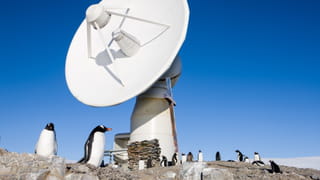The ends of the Earth are melting at a rate not seen in at least 115,000 years. And over the past few months, there’s been increasing evidence that the changes we’re seeing at our planet’s poles are only growing more severe.
- On 1 August, the Greenland ice sheet lost 12.5bn tonnes of ice on a single day, a new all-time record.
- On 18 September, the Arctic Ocean reached its second lowest extent of sea ice in history.
- On 9 February, the temperature reached an astounding 20.75C (69F) on Seymour Island, just off the coast of the Antarctic peninsula, the warmest temperature ever measured on the continent. “[W]e have never seen anything like this,” said Carlos Schaefer, a Brazilian scientist working on Seymour Island.
These changes in the most remote places on Earth have huge consequences for our daily lives because our daily lives have huge consequences for the most remote places on Earth. Decades of routine human activities – going to work, driving a car, eating a hamburger, choosing a stock portfolio – have transformed the frozen parts of this planet on a scale never seen before. If we do not change our behaviour drastically to slow down and eventually stop the Arctic melt, rising sea levels and even faster rising global temperatures will threaten our very way of life.
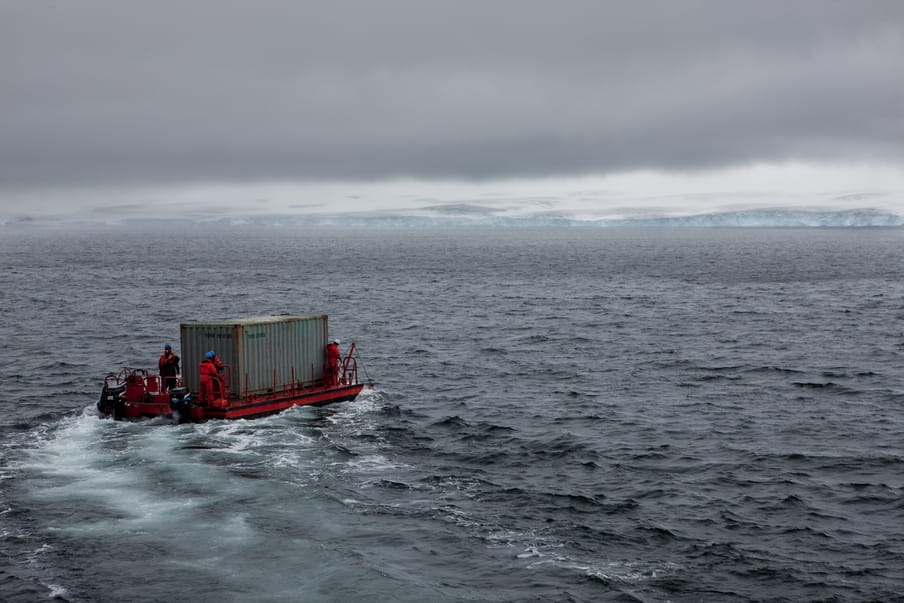
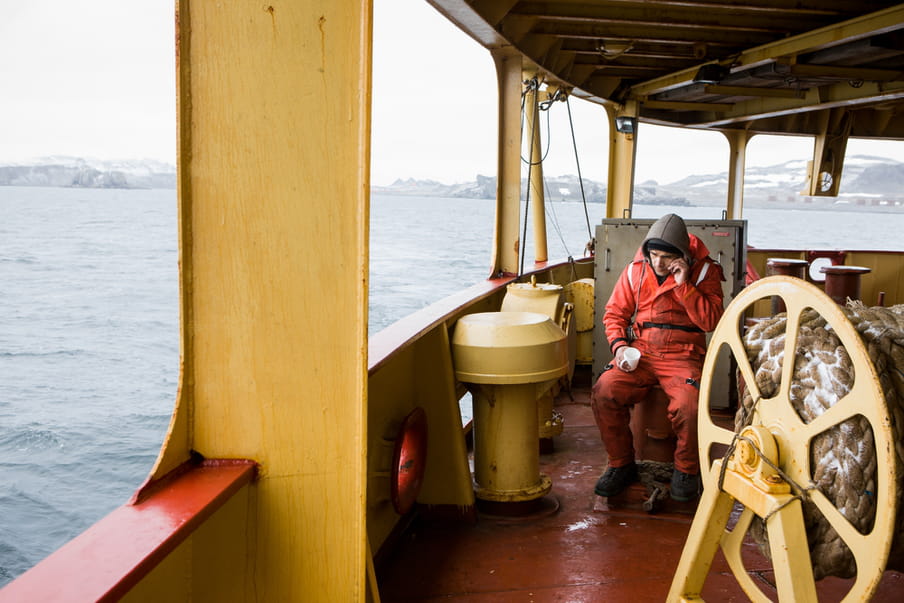
Wait, could you first tell me a bit more about the Arctic and the Antarctic?
It’s easy to lump the frozen parts of our planet together, but the Arctic (the North Pole) and the Antarctic (the South Pole) are very different places. The Arctic is an ocean surrounded by continents, and the Antarctic is a continent surrounded by an ocean.
Due to the tilt of our planet’s axis, the polar seasons are always in opposition. When it’s summer in Antarctica from December to February, it’s winter in the Arctic.
Last year marked the 60th anniversary of the Antarctic Treaty, arguably the most successful international treaty ever devised. It has prevented territorial claims on the continent and banned resource extraction, instead encouraging transnational cooperation for science and environmental protection. In the Arctic, on the other hand, there’s a growing sense of a free-for-all conflict over resource extraction.
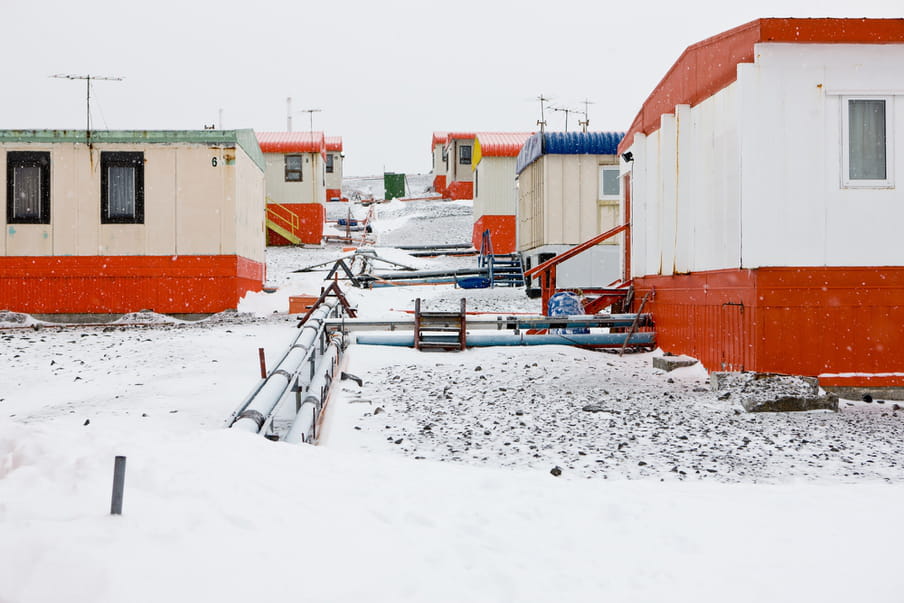
What’s going on in the Arctic?
People have lived in the Arctic for tens of thousands of years, but the region itself is dominated by a seasonally frozen ocean – the Arctic Ocean. Over the past 20 years, more and more of the ocean has thawed out during the summertime, which has set off a chain reaction of further warming. Ocean water is darker in colour than ice, and since darker colours absorb more of the sun’s energy, the entire region – including the parts of the Arctic that are on land – has warmed at twice the rate of the global average. And that warming is kicking off even more chain reactions.
Earlier this month, a new study based on measurements of seasonally frozen lakes in Alaska showed that permafrost melting in the Arctic stands to release vastly more greenhouse gases over the next few decades than previously thought. Unexplained methane readings continue to puzzle scientists, and the landscape is starting to radically shift. The methane bubbles are beautiful, but the hills and valleys are being transformed by bacteria brought to life after millennia of dormancy.
The survival of Indigenous peoples are in conflict with resource extraction across the region. The United States, India, Canada, Russia, and Norway are all planning new drilling projects in the Arctic, and the privately funded scientists employed by oil and gas companies are working to accelerate the region’s destruction.
The Arctic is an example of emergent conflict at a moment when climate change is reshaping the political, economic, and physical fabric of the world
Eight countries claim territory inside the Arctic Circle, but dozens more stand to benefit from the rapidly clearing shipping lanes that the melting ice provides. The shortest distance between two points is a straight line, and on a globe, that often means passing over the North Pole. Travelling from Japan to the UK by sea is currently a 24,000km journey, passing through the Suez canal and the Strait of Malacca. Taking an ice-free route through the Arctic would cut the length of that journey by 40%. That’s currently only possible with the help of expensive icebreakers, but the route could be more freely accessible soon as the Arctic warms.
The militarisation of the Arctic has already begun. Russia dominates the region with a fleet of dozens of icebreakers, but China recently announced a plan to include the Arctic in its belt-and-road initiative, opening a new frontier in international relations. A tiny town in Norway, the first one across the border with Russia, is vying to become a major Arctic port on China’s “Arctic Silk Road”. The Arctic’s rise to prominence is an example of emergent conflict at a moment when climate change is reshaping the political, economic, and physical fabric of the world.
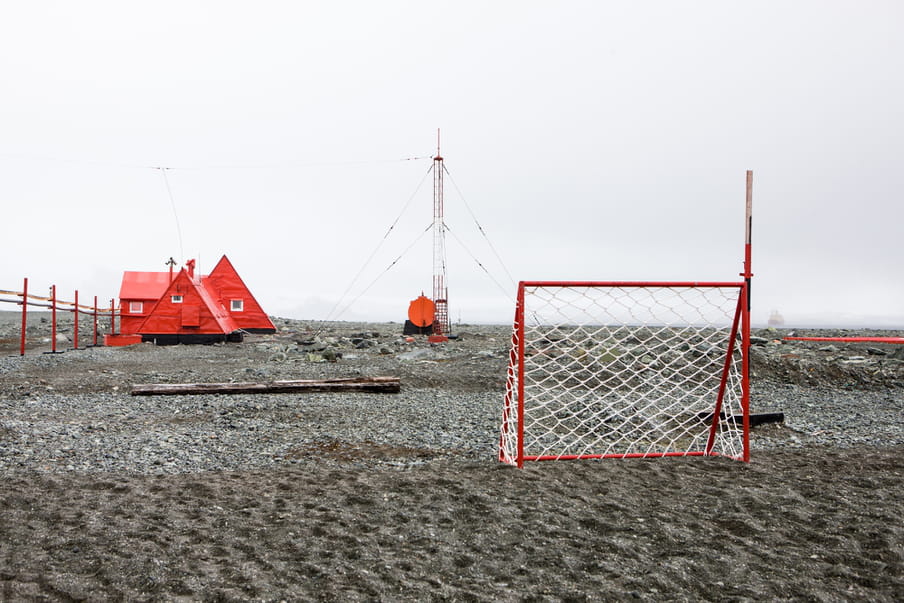
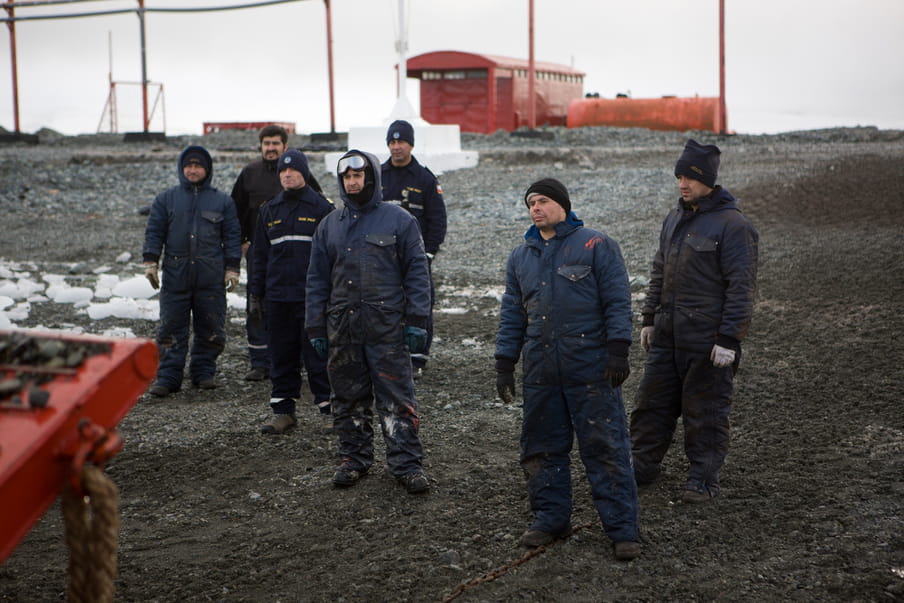
Got it. And what about Antarctica then?
Antarctica, on the other hand, has no Indigenous human population. And, if anything, the scale of geography and change there is far more vast and consequential than in the Arctic.
Antarctica is home to the largest block of ice on Earth, and the west Antarctic ice sheet is its most vulnerable chunk. The ice sheet is grounded below sea level, which means it is highly vulnerable to changes in ocean temperature. Recently, scientists have embarked on a high-stakes expedition to measure key glaciers in west Antarctica for the first time.
The connected ice floes of Thwaites and Pine Island glaciers together drain an area of west Antarctica the size of Texas, about 440,000 cubic kilometres of ice. Scientists have long referred to this section of the ice sheet as its “weak underbelly”, the especially sensitive area where warm ocean water intrusions could kick off a chain-reaction collapse that could raise global sea levels more than a metre in just a few decades in a worst-case scenario.
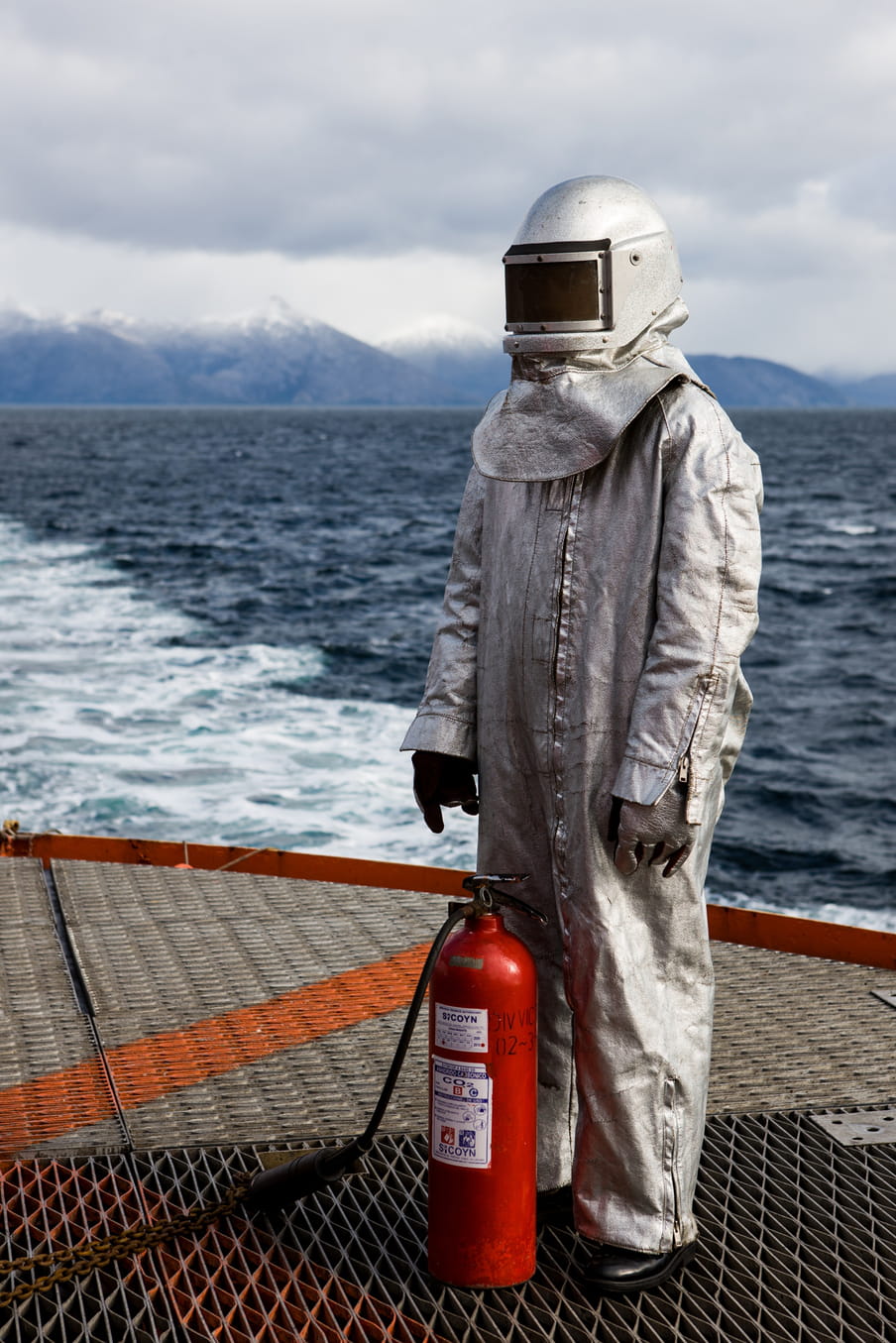
These glaciers are almost unfathomably remote, more than 1,500km away from the nearest permanently staffed research outpost. Only a handful of people have ever set foot on them. They are monitored almost entirely by satellite sensors, with detailed data arriving in just the past two decades. Alarming new scientific studies based on these data have triggered an urgent international research mission that is now underway.
Pine Island glacier has retreated quickly over the past two decades, and lost another 350 square kilometre iceberg (approximately three times the size of Paris) earlier this month. Its acceleration toward the sea has resulted in stretching, thinning, and cracking, which makes future large icebergs more likely.
Thwaites glacier – half the size of Germany, and more than twice the size of Pine Island – is going through similar effects, with its speed doubling over the past 30 years as it continues to rapidly shrink. Warm water is essentially shredding the glacier into shards, and its eventual complete collapse is likely now just a matter of time.
“What the satellites are showing us is a glacier coming apart at the seams,” Ted Scambos, a polar scientist at the University of Colorado, told Nasa’s Earth Observatory. “Every few years, a new area seems to be letting go and accelerating. Like taffy being stretched out, this glacier is being drawn into the ocean.”
The glacier is itself more than 150km wide and extends inland more than 500km. “Inland” is a relative term here because the seafloor actually gets deeper toward the core of the west Antarctic ice sheet, and that’s a perfect recipe for a chain reaction of collapse. Thwaites is currently shedding about 250bn tonnes of ice and retreating by about 2km each year. The main thing currently stopping it is an undersea ridge – a thin “grounding line” of rocky subsea hills, about 30km from the current terminus. Once the glacier passes that point, warm water will be able to flow unmitigated toward the centre of the continent, and all bets are off.
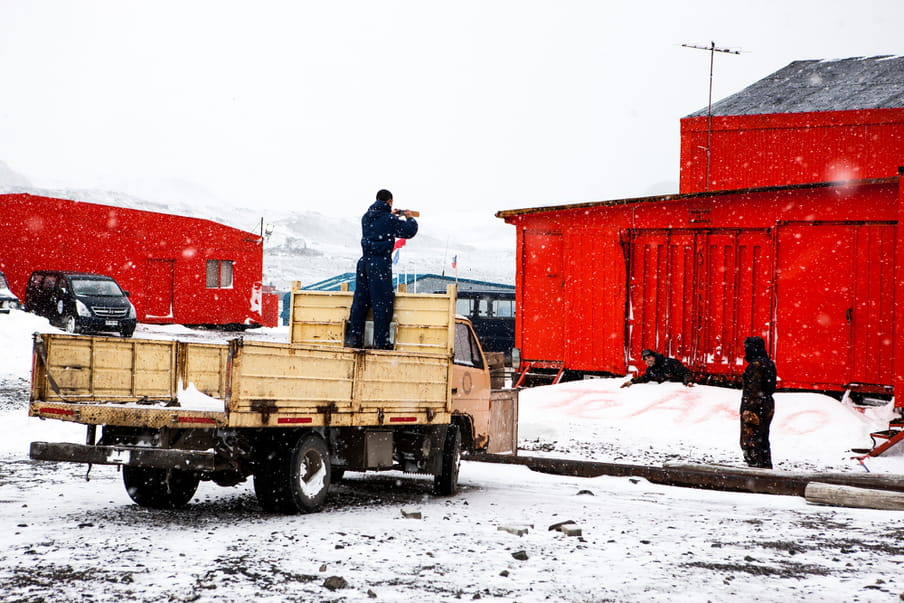
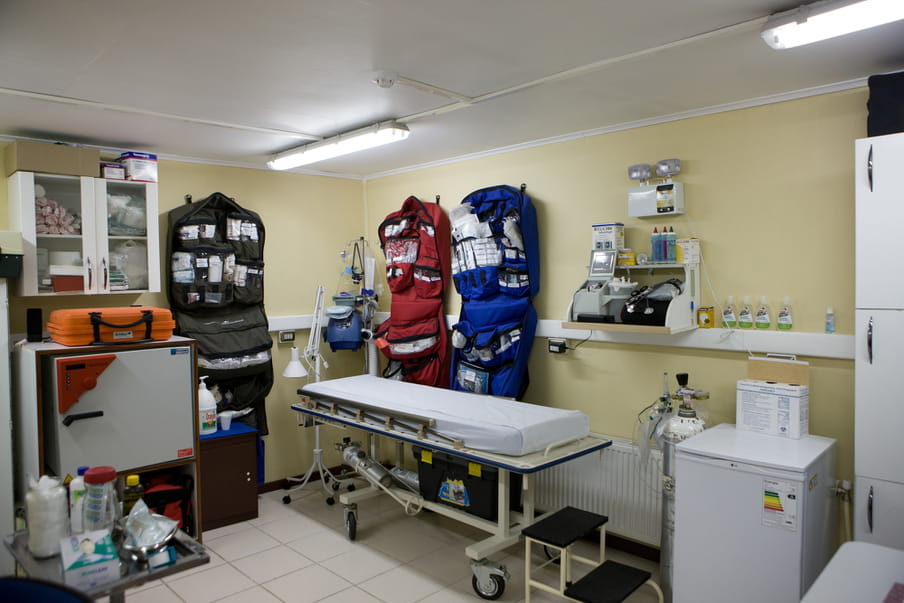
Why do I hear so little about this?
Before this year, only four people had ever seen Thwaites glacier in person. Earlier this year, humanity finally got its first glimpse of Thwaites’s subsea grounding line. The largest-ever expedition to Thwaites successfully drilled a narrow 600 metre deep hole through the ice to reach the underside of the glacier and sent a small submarine to take key measurements of water temperatures and images of perhaps one of the most consequentially unexplored places on the planet.
BBC journalist Justin Rowlatt, who was embedded with the team of scientists at Thwaites for more than a month, described the incredible lengths that were necessary to get the gear here that collected the data:
“Two ice-hardened ships docked alongside an ice cliff at the foot of the Antarctic Peninsula during the last Antarctic summer. A team of drivers in specialist snow vehicles then dragged it more than a thousand miles across the ice sheet through some of the most inhospitable terrain and weather on Earth … drilling a 30cm hole through almost half a mile of ice at the front of the most remote glacier in the world is not easy.”
It was, according to one climate journalist, an Earth-shaking moment akin to astronomers’ Nobel Prize-winning first images of a black hole a few years ago. The murky quality of the images gave off the feeling of the second act of a Hollywood disaster movie, where you finally see the monster face-to-face. The water temperature beneath the glacier at the grounding line? More than two degrees above freezing. Just warm enough to change everything.

 About the images
The series ‘Permanence in Antarctica’ by photographer Ronald Patrick (born in Santiago de Chile) focuses on the extreme conditions and challenges of living in isolation on the scientific and military bases in Antarctica. As they have become an almost permanent residence for many that work there, spaces for comfort, recreation and communication stand in stark contrast with the harsh surroundings. (Lise Straatsma, image editor)
About the images
The series ‘Permanence in Antarctica’ by photographer Ronald Patrick (born in Santiago de Chile) focuses on the extreme conditions and challenges of living in isolation on the scientific and military bases in Antarctica. As they have become an almost permanent residence for many that work there, spaces for comfort, recreation and communication stand in stark contrast with the harsh surroundings. (Lise Straatsma, image editor)
 Not a member of The Correspondent yet?
The Correspondent is a member-funded, online platform for collaborative, constructive, ad-free journalism. Choose what you want to pay to become a member today!
Not a member of The Correspondent yet?
The Correspondent is a member-funded, online platform for collaborative, constructive, ad-free journalism. Choose what you want to pay to become a member today!
Dig deeper
 Lawyers are going to court to stop climate change. And it might just work
Governments and polluters are being put in the dock for their part in the climate crisis. The legal system is not the best place for this fight, but these cases could still change the world.
Lawyers are going to court to stop climate change. And it might just work
Governments and polluters are being put in the dock for their part in the climate crisis. The legal system is not the best place for this fight, but these cases could still change the world.


